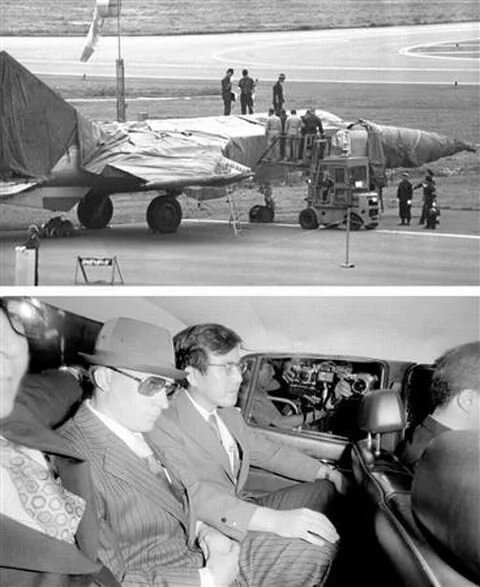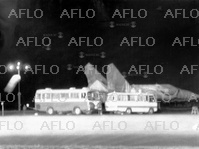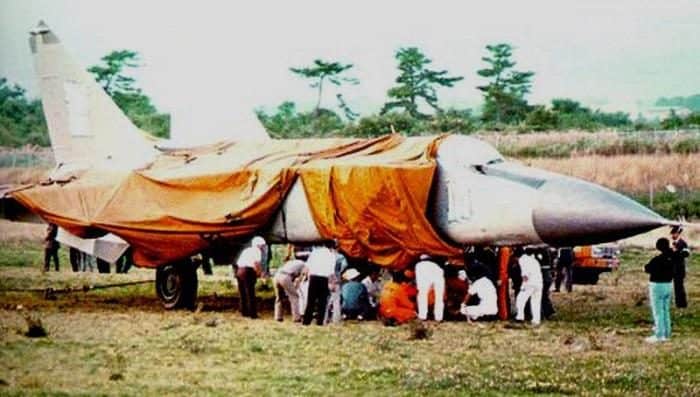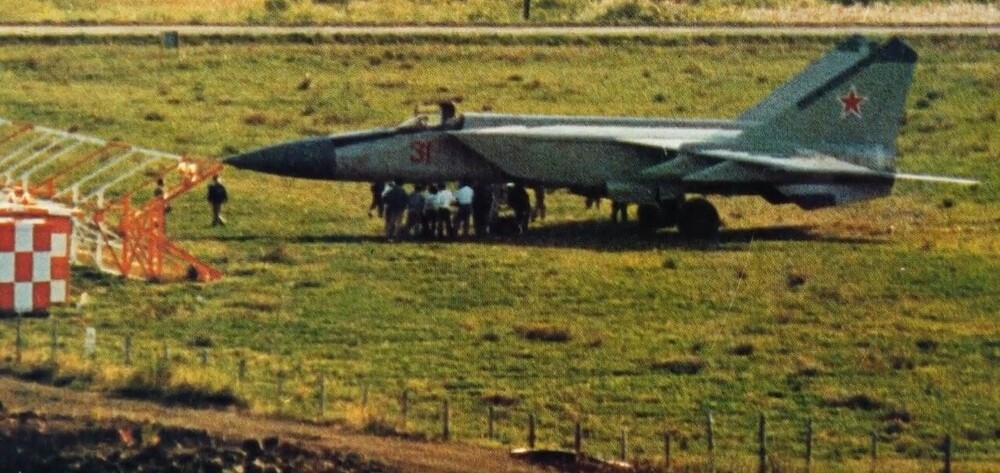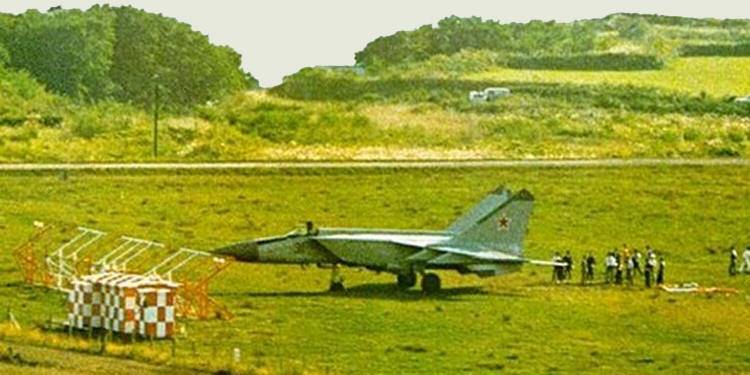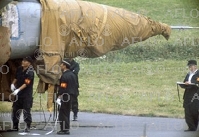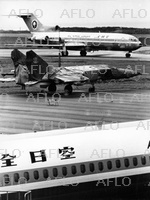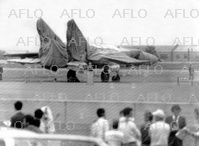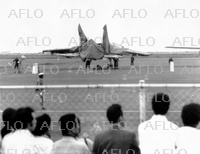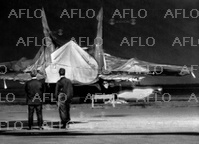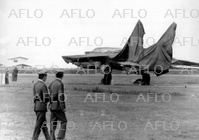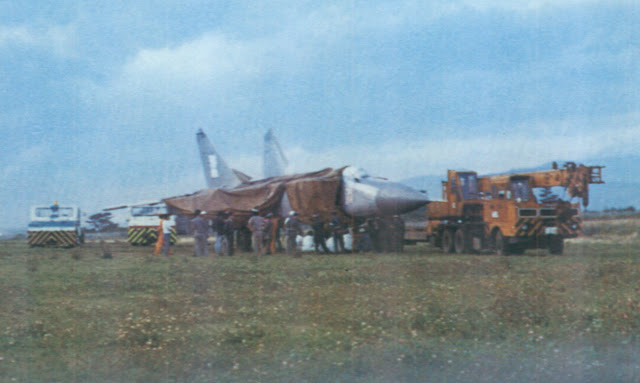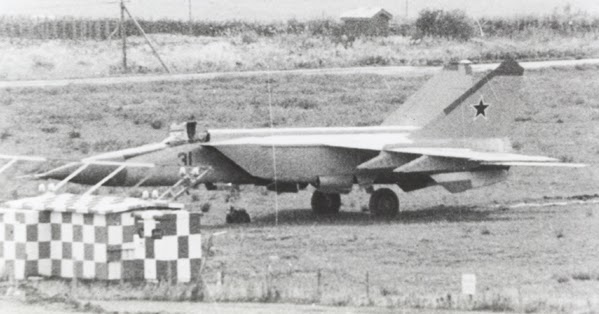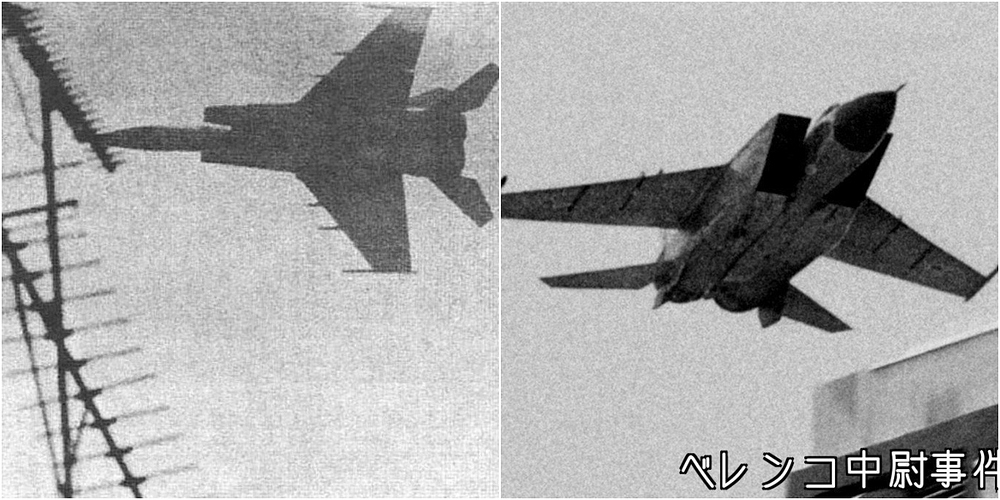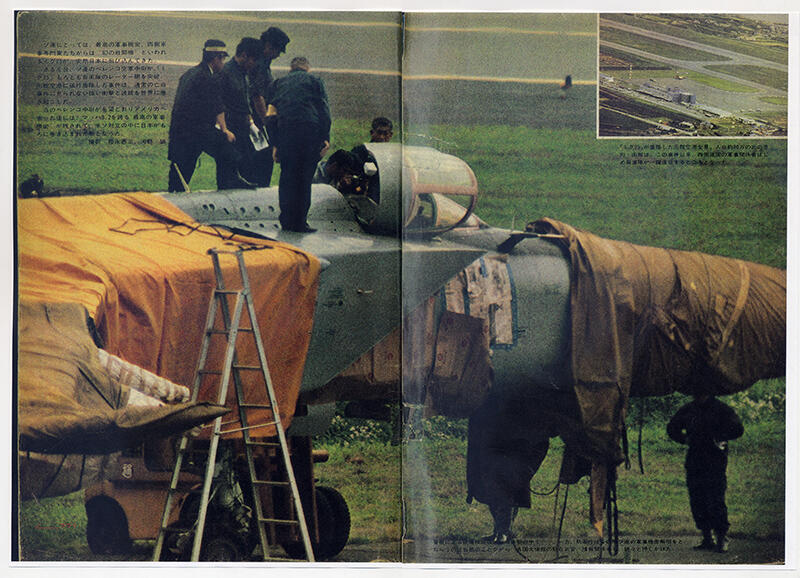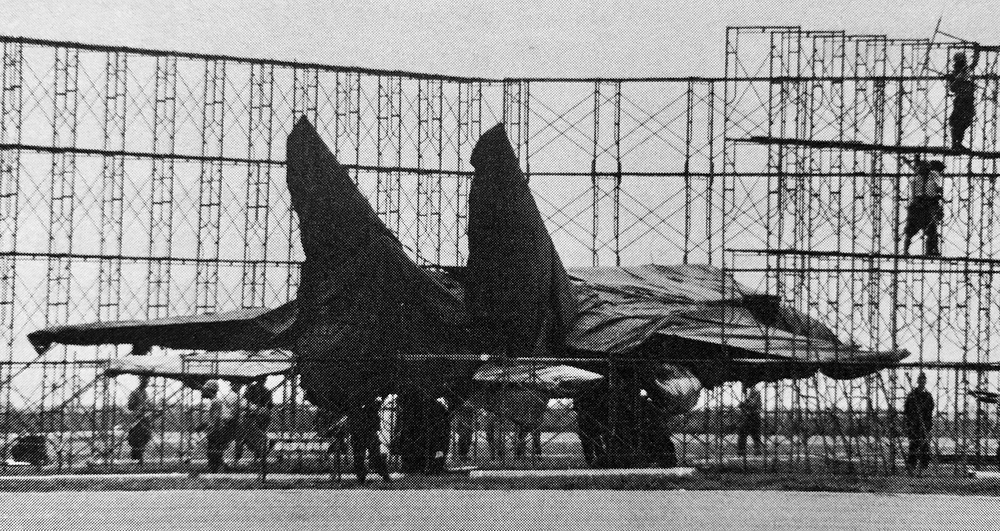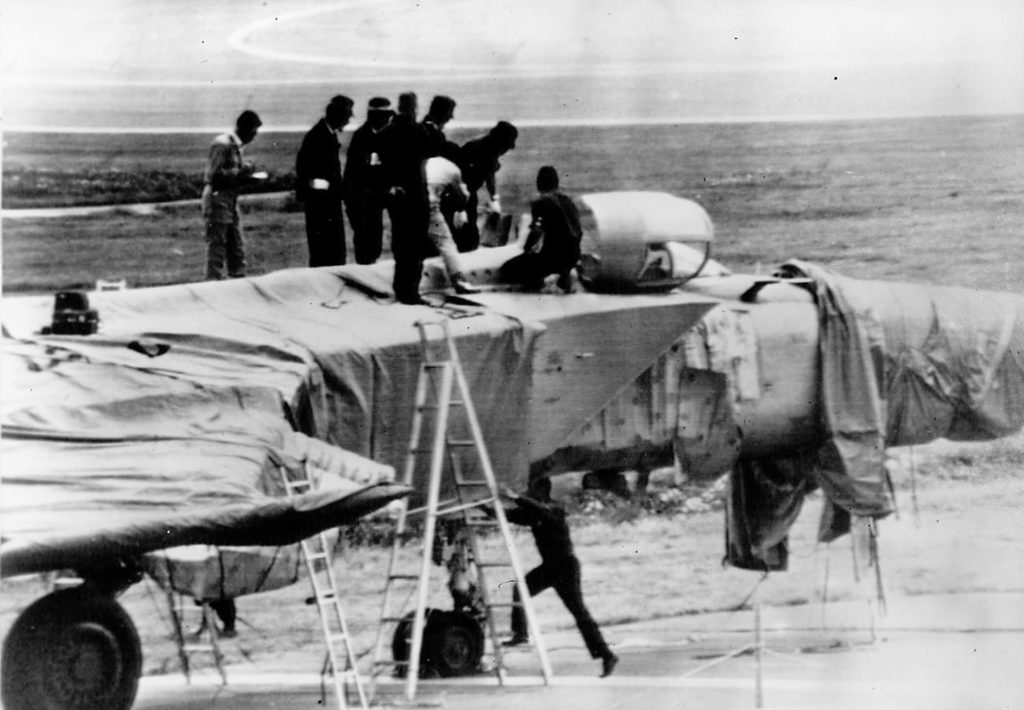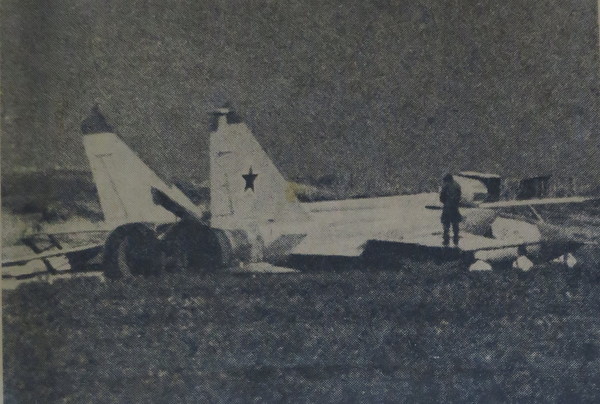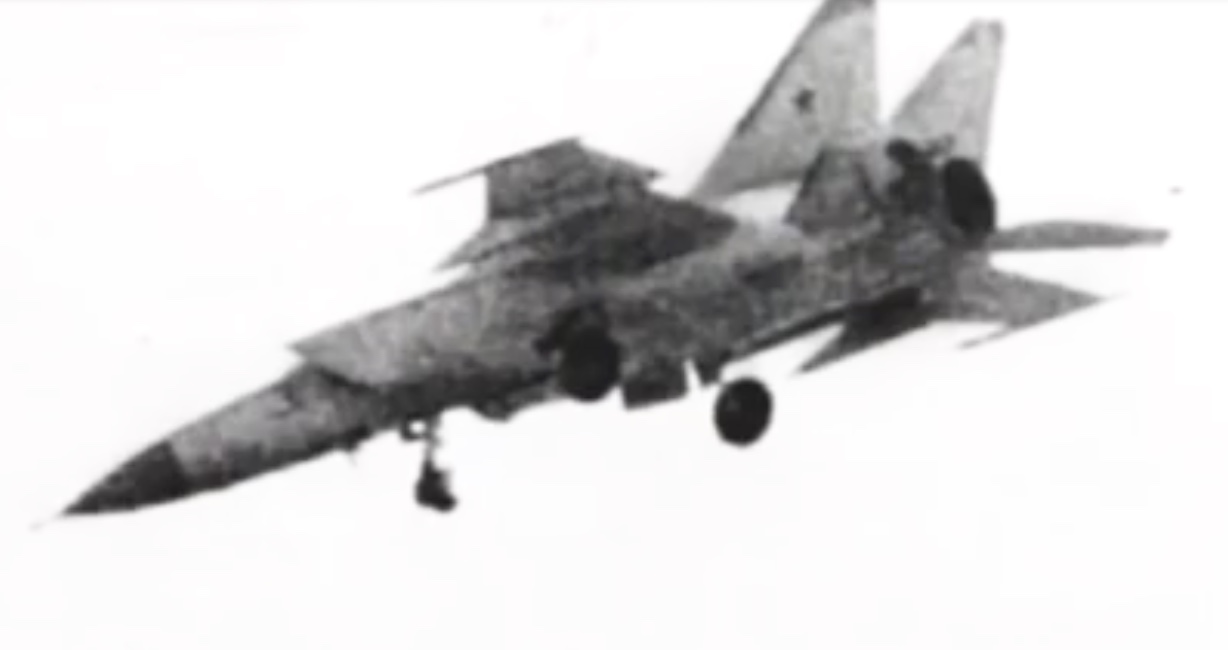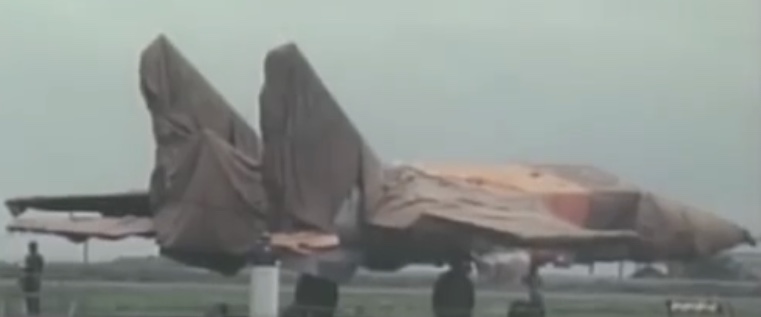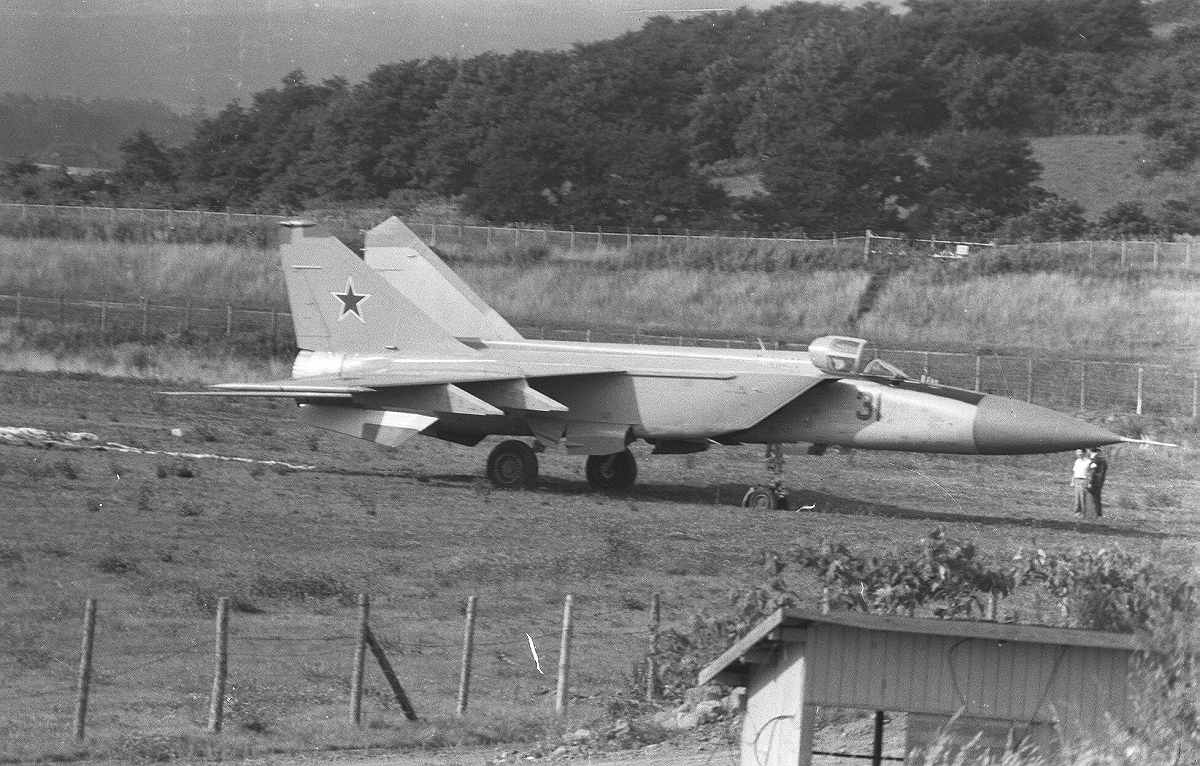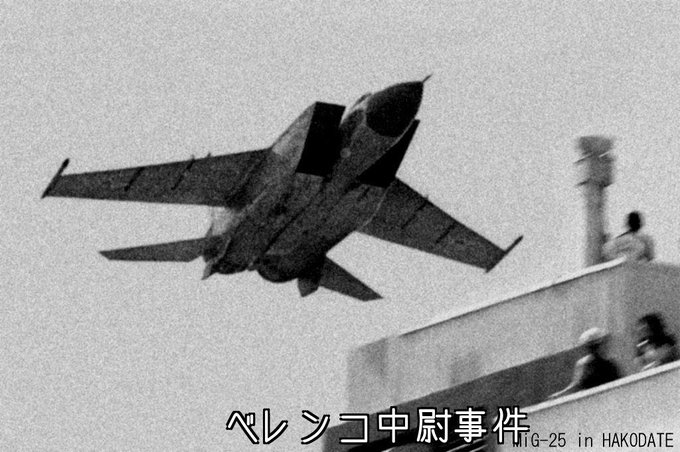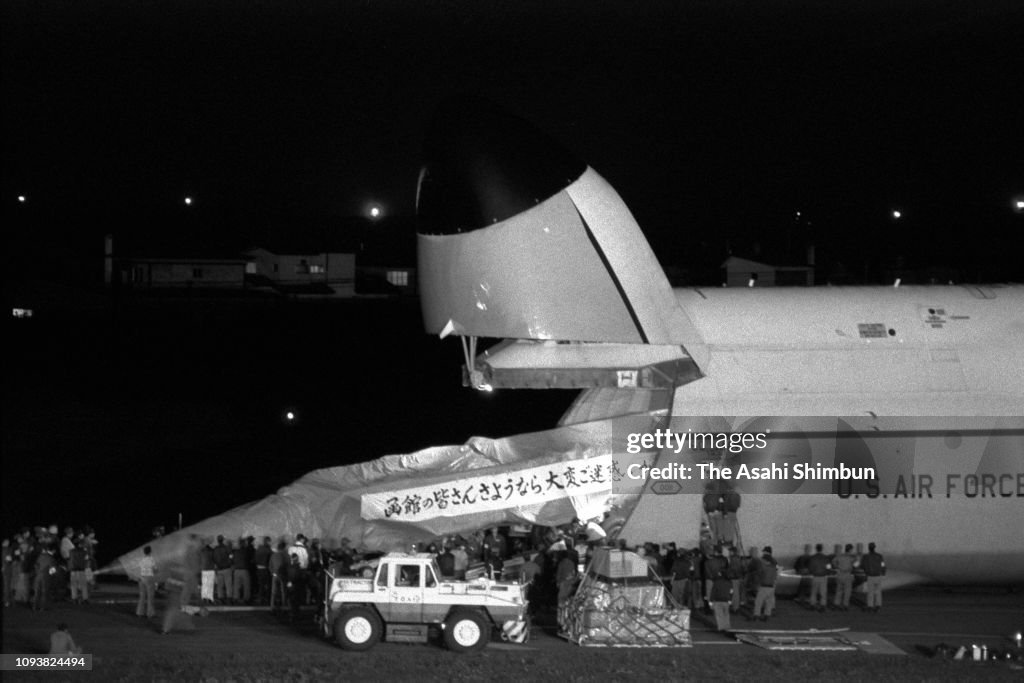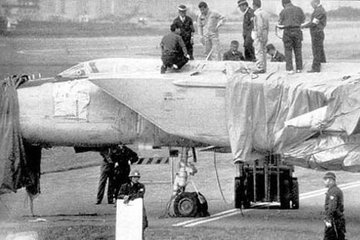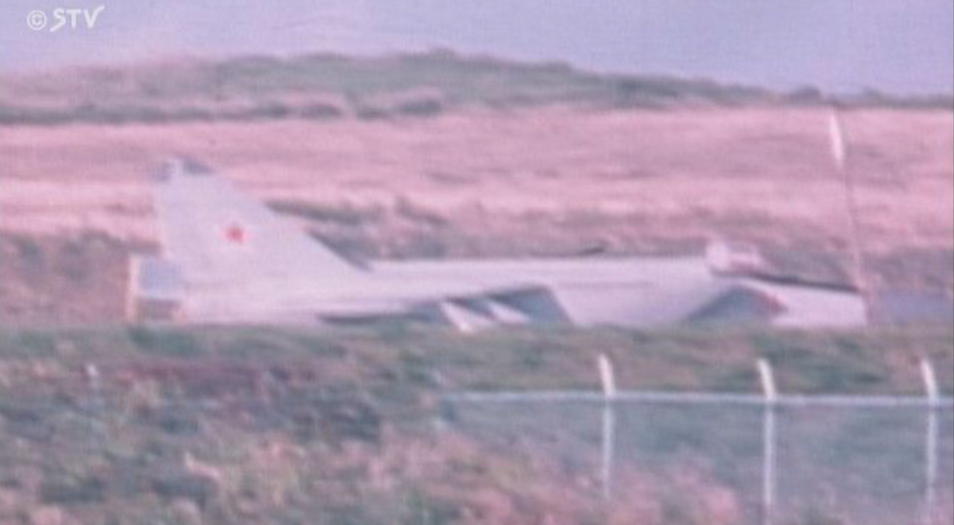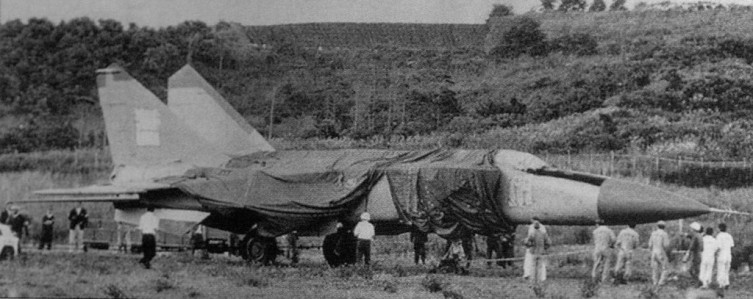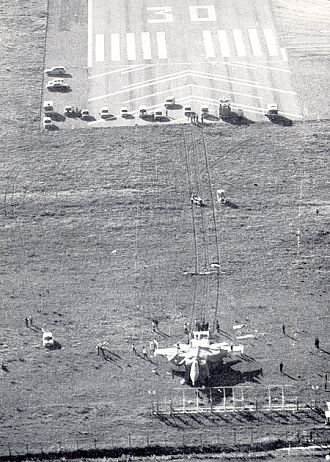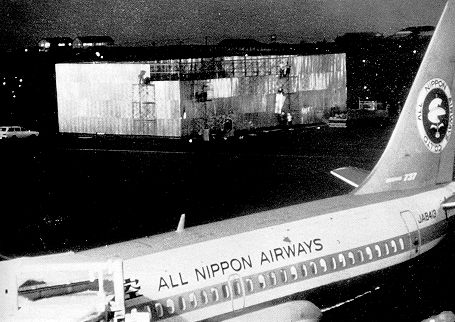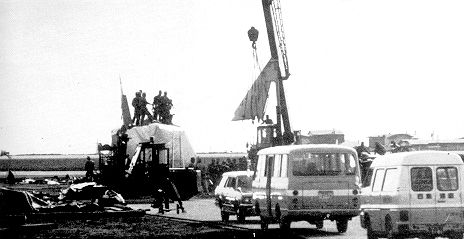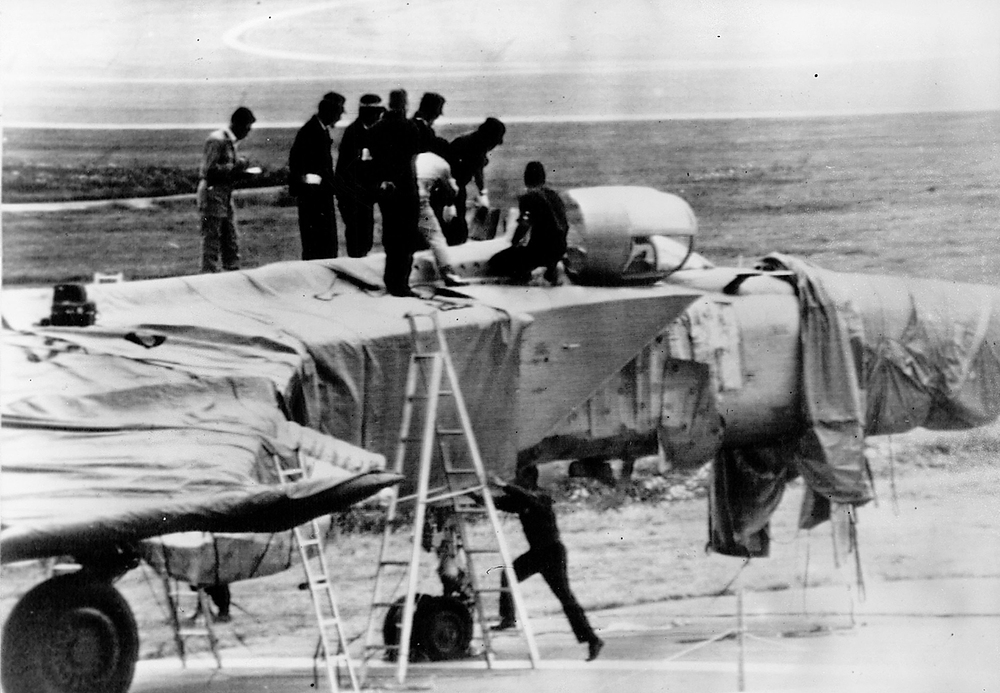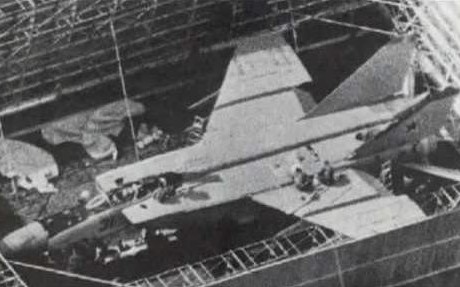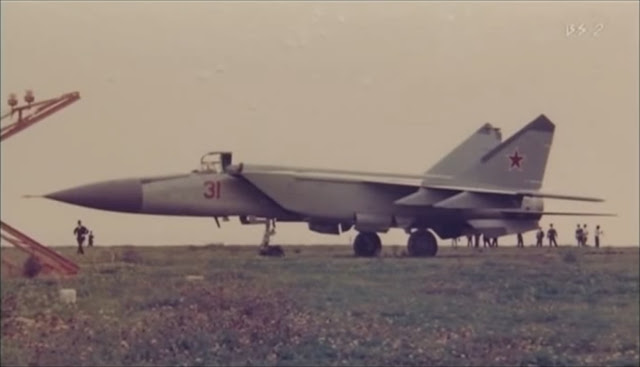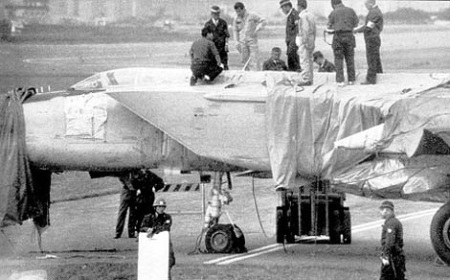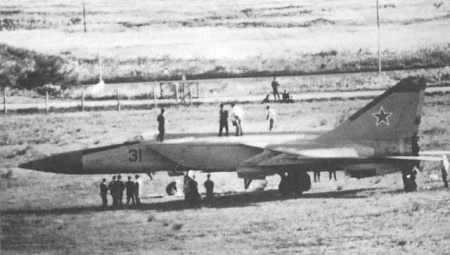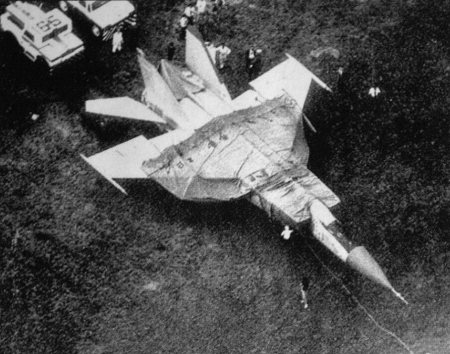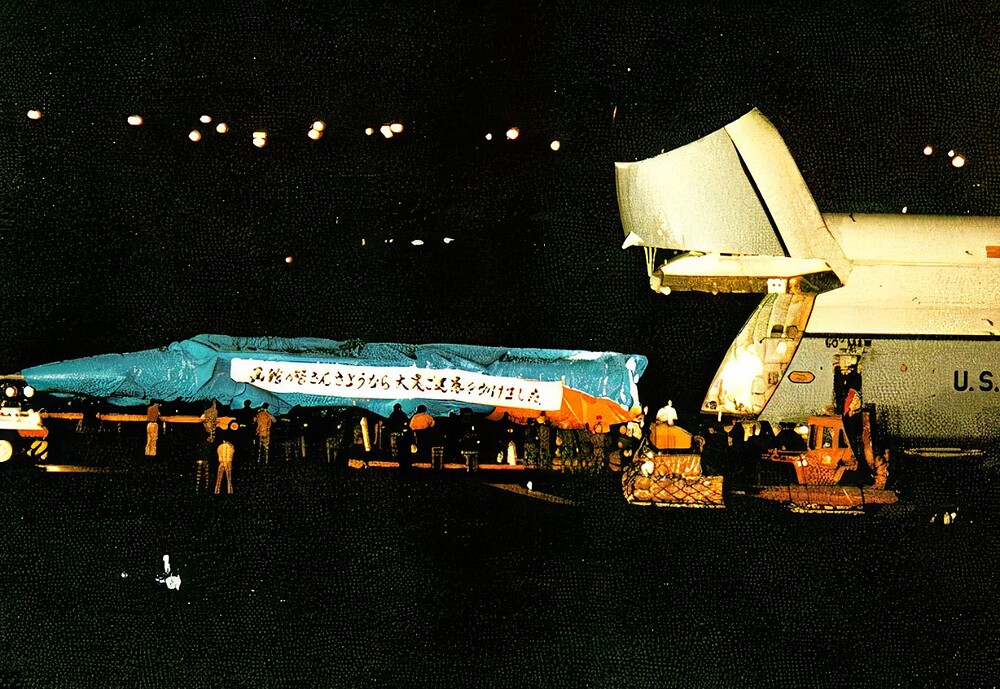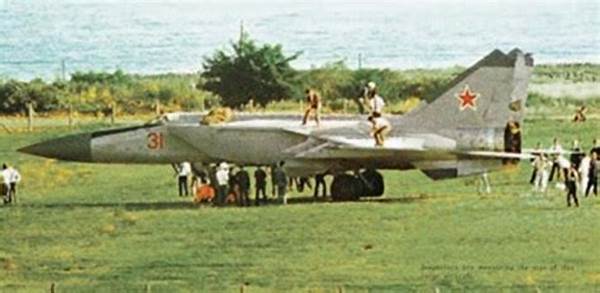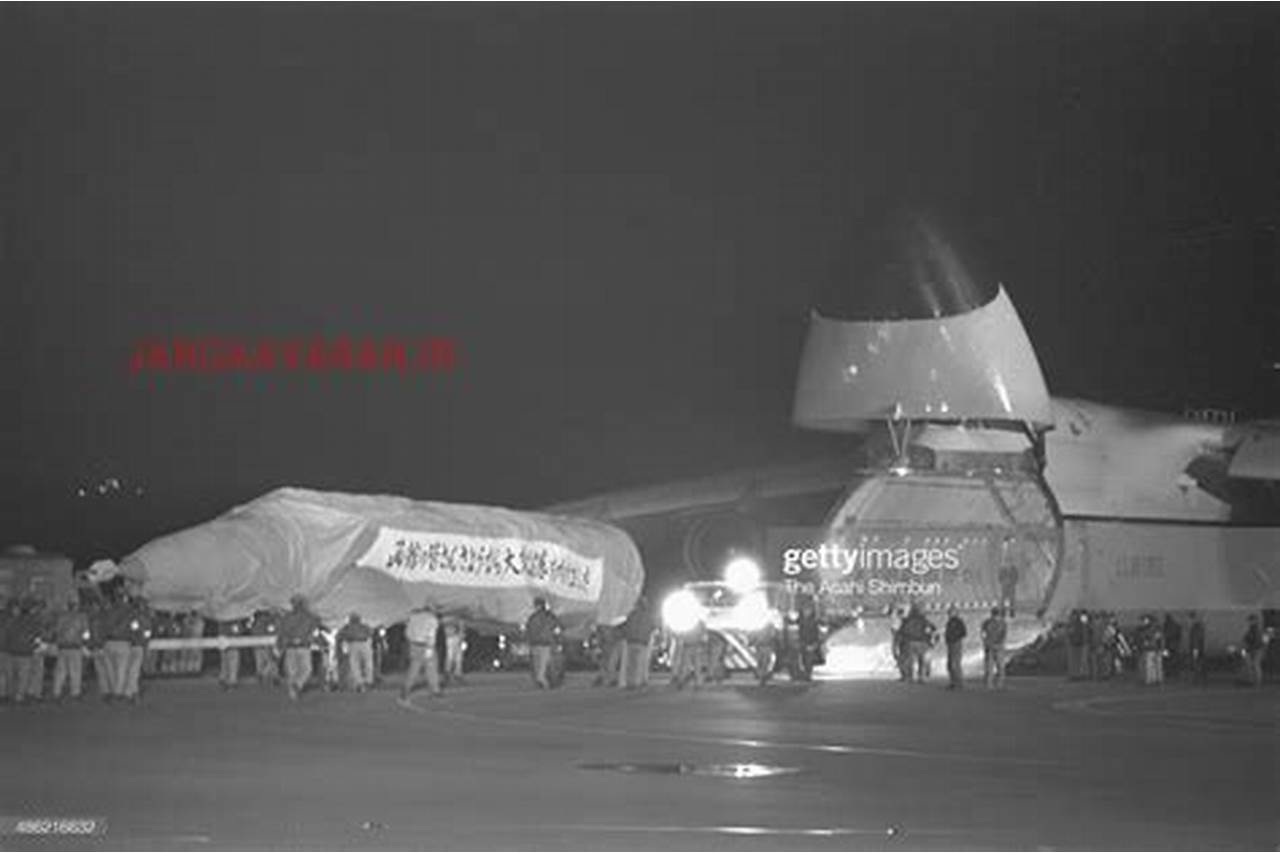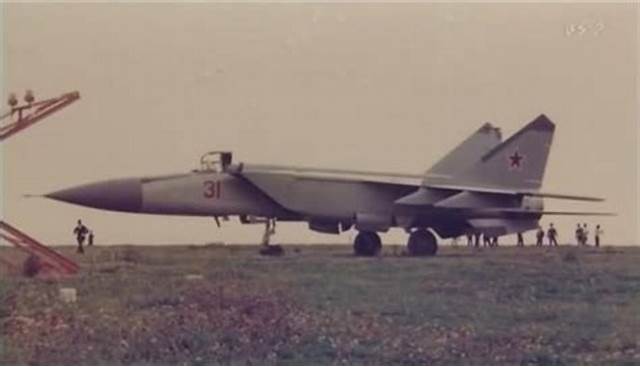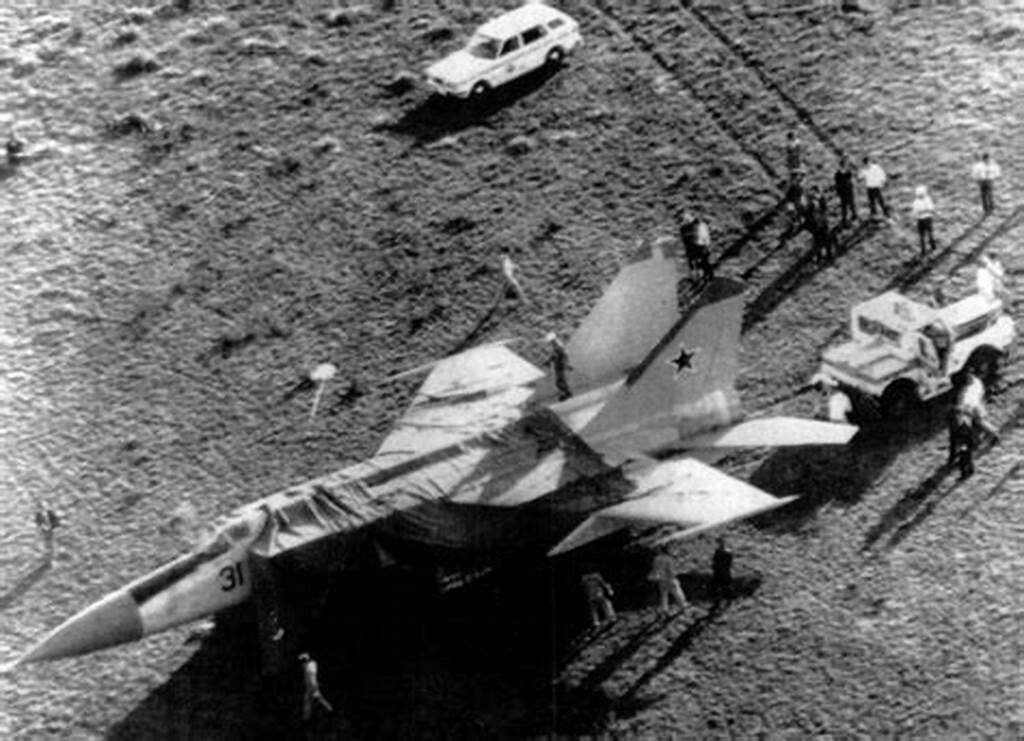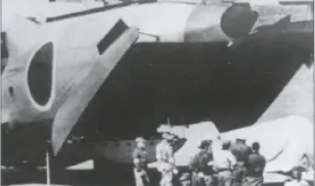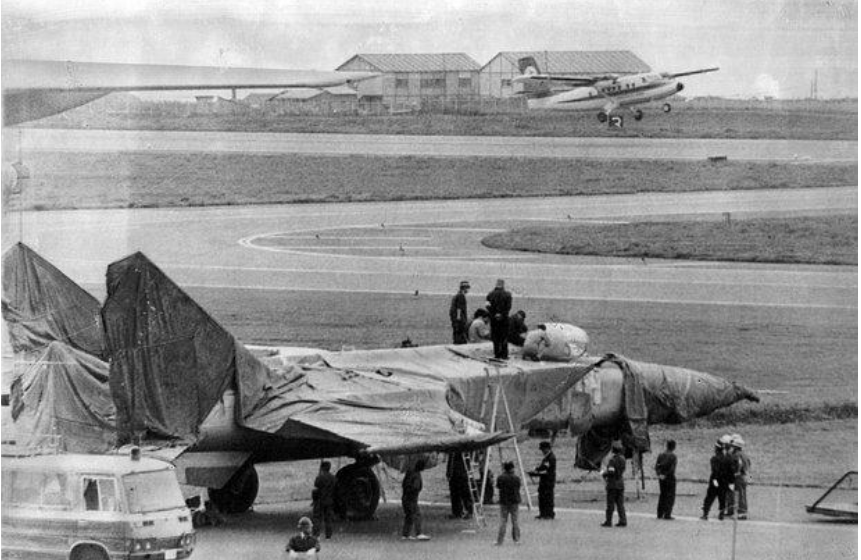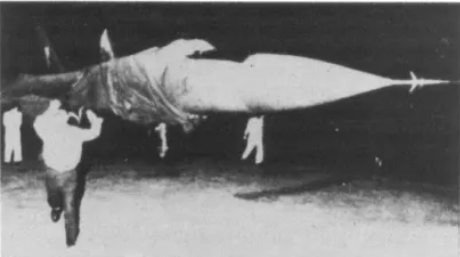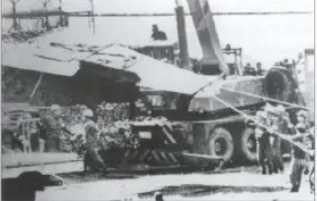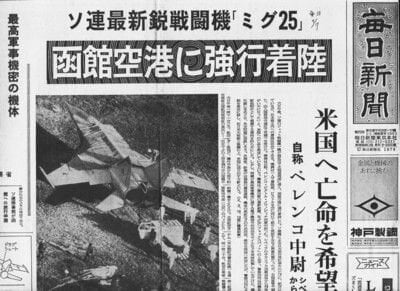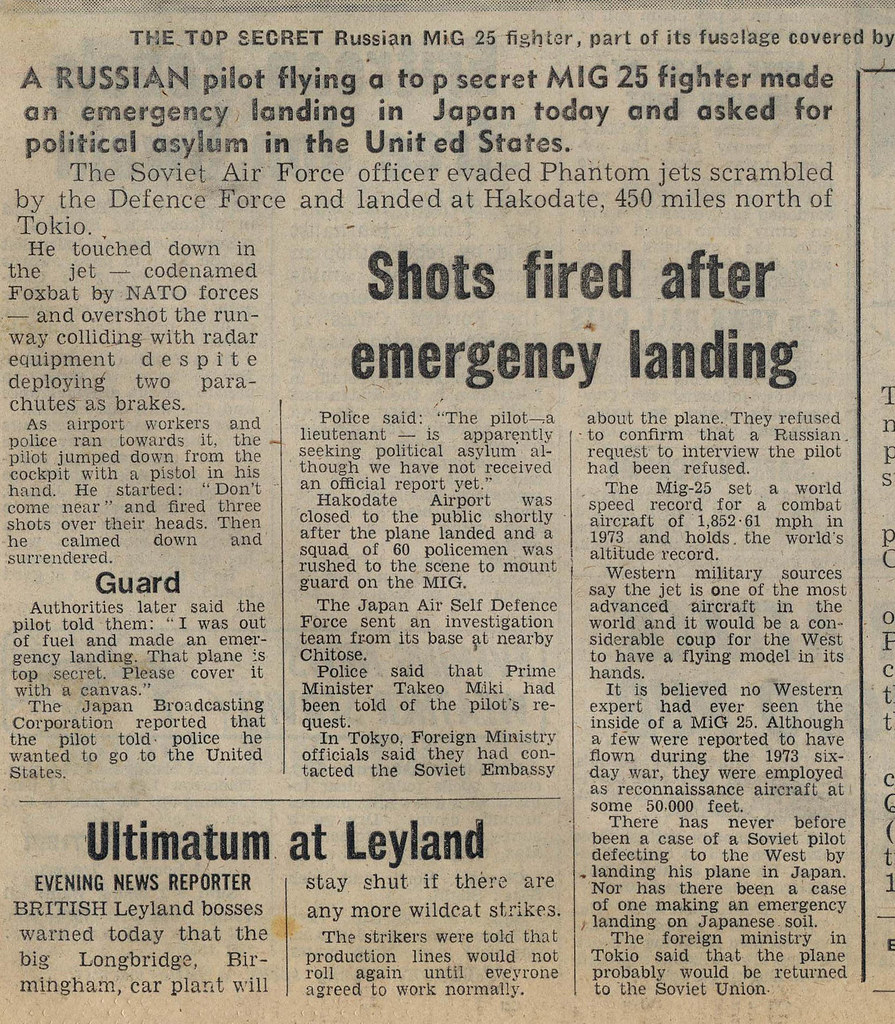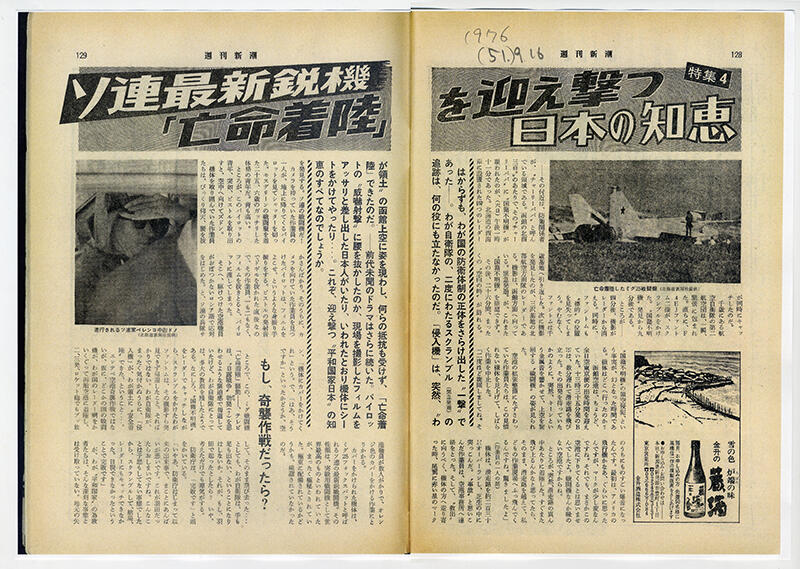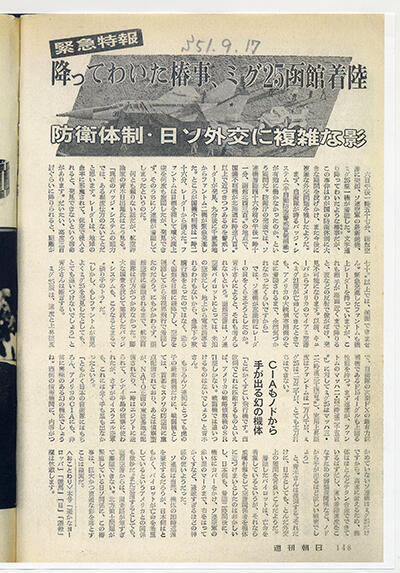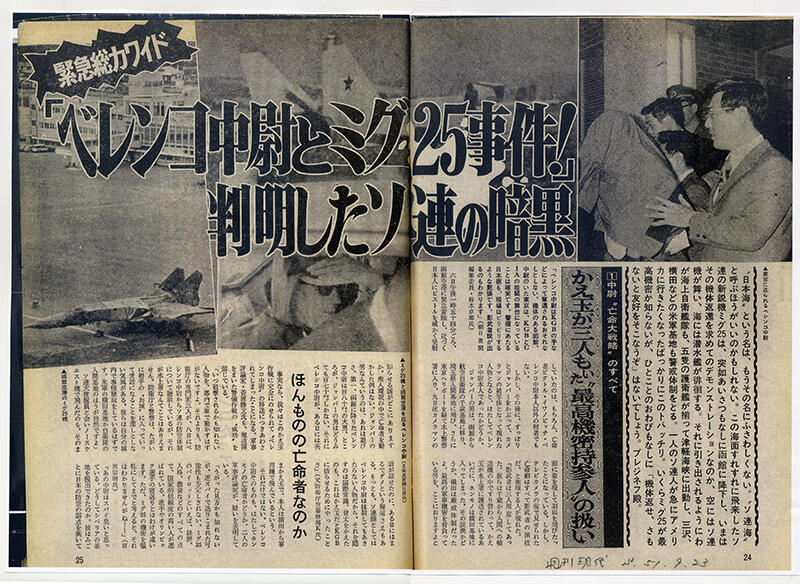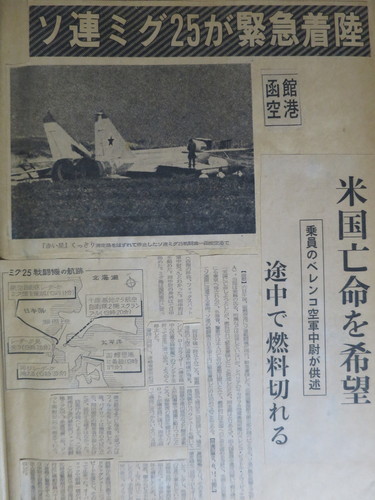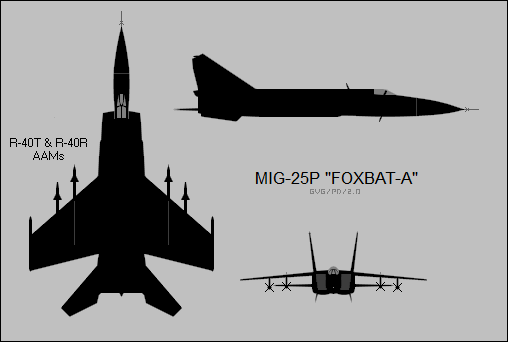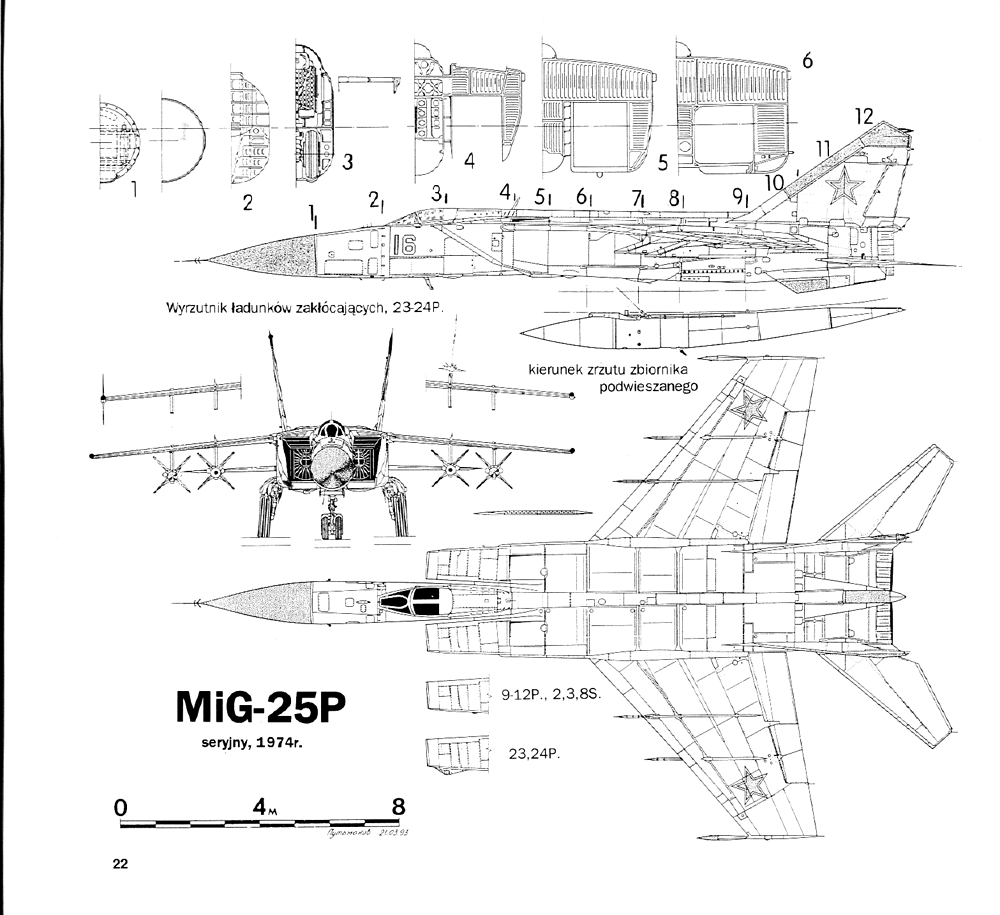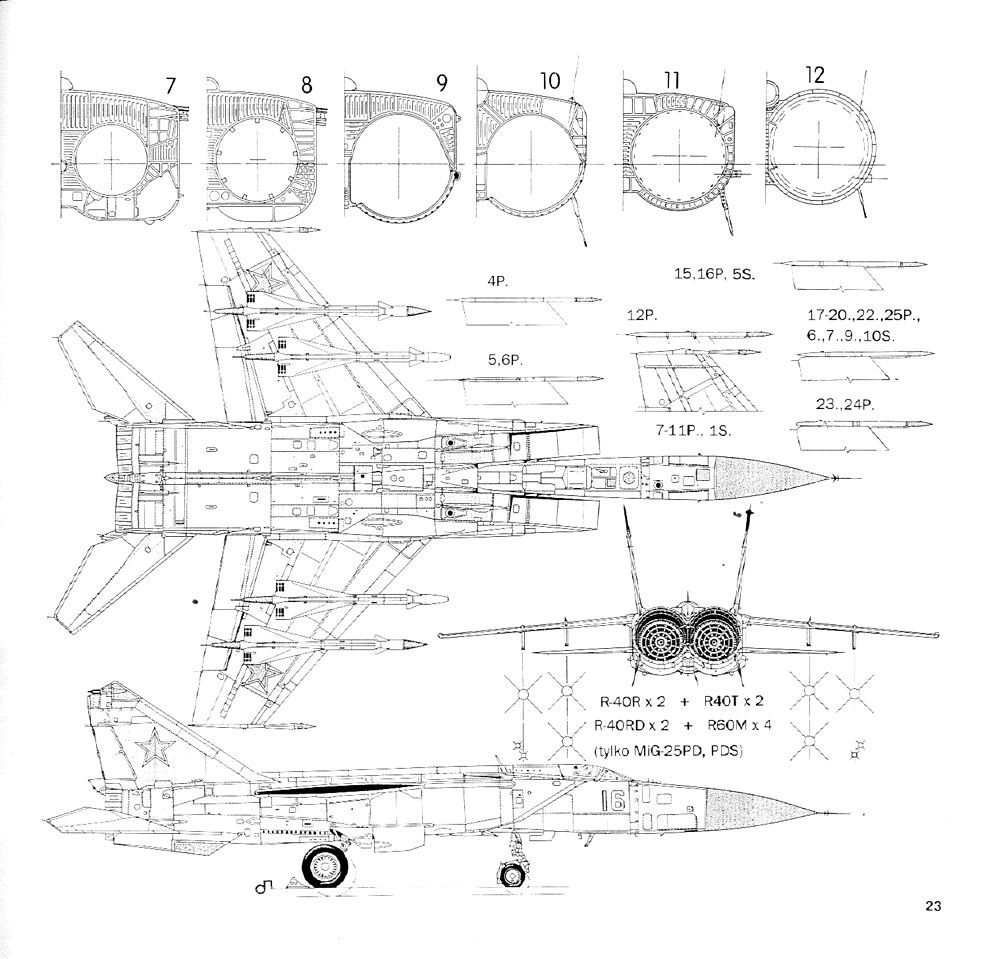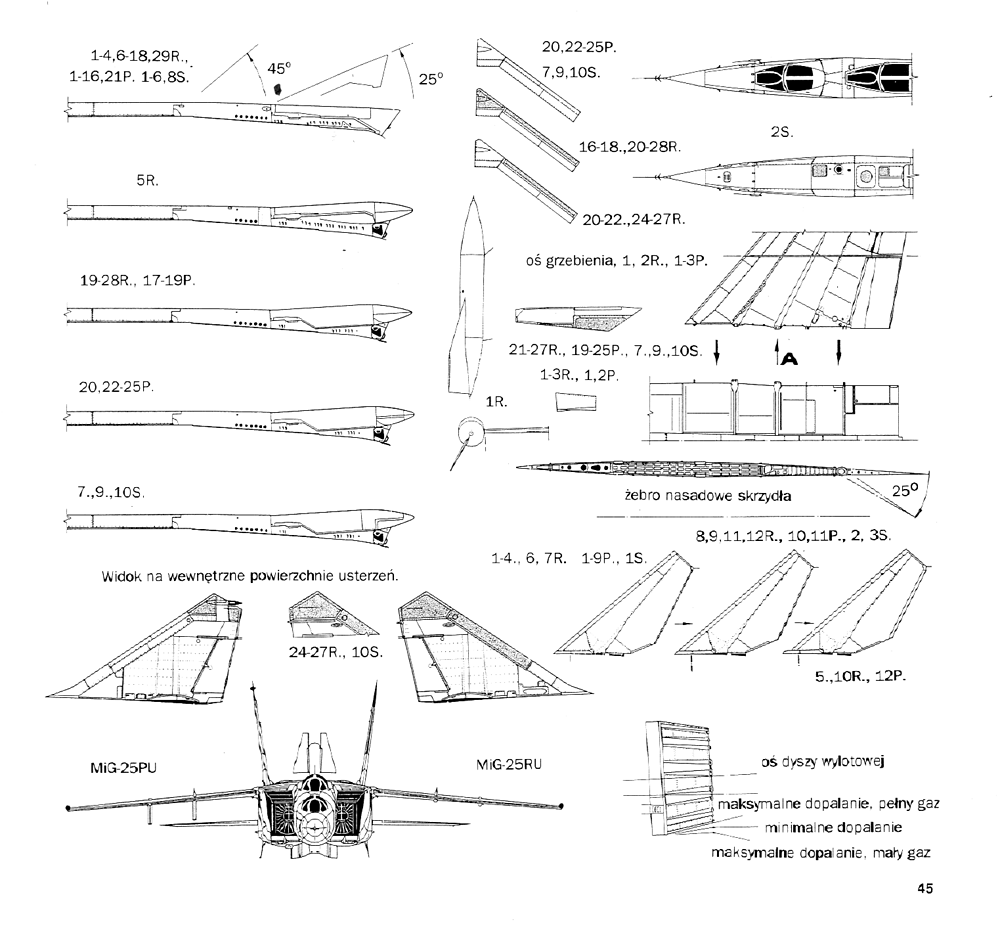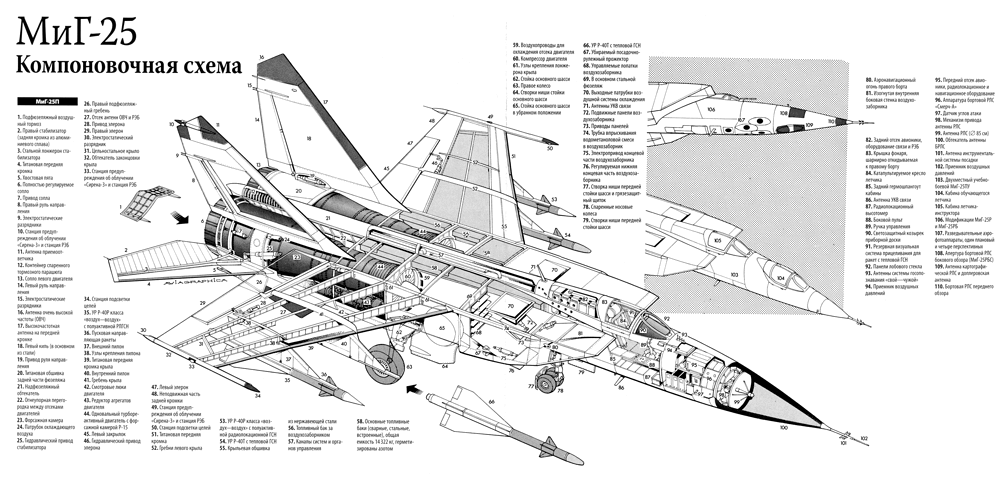- Yes
- No
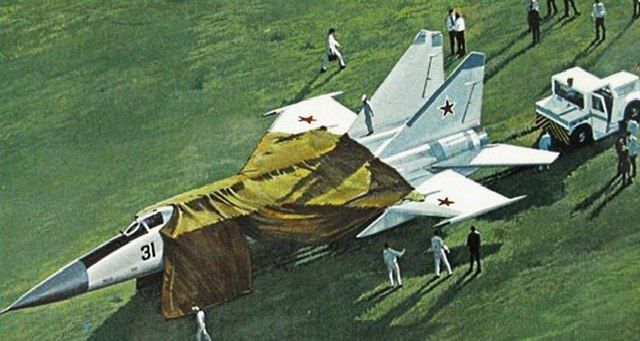
Japanese Mikojan-Gurewicz MIG-25P
This suggestion will focus on the MIG-25P red 31 aircraft, which was piloted by Viktor Belenko on September 6, 1976, when it defected to Japan. This aircraft stayed in Japan until November 15, 1976. While in Japan, the aircraft was tested by the Japanese as well as Americans operating under Japanese supervision.
History
On September 6, 1976, three modern interceptor fighters MIG-25P took off from the Chugujewka airbase for a training flight. One of the MIG-25P, number 31, was piloted by Lieutenant Viktor Belenko, who before the flight packed all the available technical documentation of the MIG-25 into the aircraft. At the beginning of the training, Belenko kept up with the other aircraft, but suddenly made a turn towards the Sea of Japan and quickly dove. The Soviet air forces believed that Belenko had lost control of the aircraft and crashed into the Sea of Japan, however, in reality, Belenko was flying at a very low altitude (about 50m) to avoid Soviet and Japanese radars. Then, when Belenko was sure that he was no longer within the range of Soviet radars, he increased the altitude of the fighter to be detected by the Japanese. The MIG-25P aircraft was detected around 13:10 by ground radars belonging to the JASDF, 370 km from Hokkaido Island. The aircraft was then at an altitude of 5700m and was flying at 800 km/h. The Japanese Self-Defense Forces declared a state of alert and ordered the immediate launch of modern F-4EJ fighters from the 302nd Tactical Fighter Squadron, which were stationed at Chitose Air Base. The fighters took off around 13:20. At that time, fearing the missiles of the Japanese air defense, the aircraft descended, disappearing into the clouds and from Japanese radars. While the Japanese radars and F-4EJ searched for the fighter piloted by Belenko, he flew undetected over Chitose airport but could not land there due to excessive cloud cover. Then, due to running out of fuel in the MIG-25P, Belenko desperately searched for any airport to land. To the surprise of the residents of Hakodate, the MIG-25P aircraft flew over the city, circling it twice, surprising all the inhabitants. During the third lap in Hakodate at around 13:50, Belenko began landing at Hakodate Airport, barely avoiding a collision with a departing passenger aircraft, a Boeing 727. The MIG-25P flew about half of the 2000m runway before touching down. Viktor Belenko struggled to stop the aircraft by fully deploying the flaps, releasing the parachute, and using the brakes to the maximum. However, the MIG-25P came to a stop only after traveling 240 meters on the grass, just a few meters before the ILS (Instrument Landing System) antennas. At this moment, the plane had enough fuel for only 30 seconds of flight. Belenko exited the cockpit and raised warning flares into the air as a few Japanese civilians approached the MIG-25P. At the same time, the flight controller from the control tower called the JSDF to inform them about Belenko’s landing at Hakodate Airport but was told to contact the police instead. When the air traffic controller called the police, he was informed to contact the JSDF, but he eventually managed to convince the police to arrive as quickly as possible. Around 14:10, 20 minutes after the landing of Lieutenant Belenko’s MIG-25P, the police arrived at Hakodate Airport and arrested the pilot, and soon after, the provincial police closed the airport and the surrounding area. At that time, representatives from the JGSDF and JASDF arrived, but the police did not let them onto the airport, explaining that: “An airspace violation is a matter of defense, but if they land at an airport in Japan, they will be handed over to the jurisdiction of the police.” During the police interrogation, Belenko confessed that he wanted to land at Chitose Airport, but could not do so due to bad weather; he also requested a meeting with the Americans to seek political asylum. During Belenko’s interrogation, his aircraft was seized by the Japanese Ministry of Justice as evidence in the case of breaking the law. The MIG-25P airplane at the airport was covered with tarps at first not completely, so that it would be less visible (and it became a tourist attraction for a while). At that time, the USSR learned what Lieutenant Viktor Belenko had done and demanded the immediate return of the pilot and the aircraft to the USSR, but at that moment Japan did not respond to these demands. The next day (September 7), Belenko was transported to Tokyo, where he met with the American ambassador. The following day (September 8), the American embassy announced the granting of political asylum to Belenko, and the day after that (September 9), representatives of the Soviet embassy attempted to convince Belenko to return to the USSR, and then in the evening, Belenko flew on a Northwest Orient Airlines flight to the USA. On the same day, the Ministry of Justice transferred the MIG-25P to the JSDF. From the moment of Belenko’s landing at Hakodate Airport, the JSDF was put on alert. The 11th Division of the JSDF, stationed in Hakodate, which was preparing for open days, canceled them. An alert status was declared, and the garrison prepared Type 61 tanks and soldiers for the possible repulsion of a Soviet landing. A state of alert has been declared, and the garrison is preparing 200 soldiers who are to be supported by Type 61 tanks, L-90 caliber 35 mm anti-aircraft guns, and the support of the 28th Light Infantry Regiment, in the event of a potential Soviet amphibious assault (the USSR considered such a possibility). Around the Hokodate airport, L-90 anti-aircraft guns were deployed, which briefly opened warning fire at unidentified aircraft with tracer ammunition, but soon ceased fire when it turned out they were allied Kawasaki C-1s. The JMSDF was also put on alert and began intensive patrols of the waters surrounding Hokkaido. Three ships patrolled the Sea of Japan, while two ships were on the Pacific side. Additionally, in the vicinity of the city of Hakodate, torpedo boats and minesweepers were deployed, and the Tsugaru Strait was continuously patrolled by JMSDF ships and helicopters between September 8 and 25. The JASDF in the Hokkaido region has been put on alert and has been conducting 24-hour air surveillance over Hokkaido using F-4EJ fighters. On September 11, 1976, the JSDF began preparations to transfer the MIG-25P aircraft from Hakodate Airport to Hyakuri Air Base. This was due to the fact that the MIG-25P was disrupting air traffic at the airport and inspections could not be conducted over it. Initially, the JSDF planned to transport the aircraft using its own resources, but all JASDF aircraft were too small to move the MIG-25P in one piece (they did not want to disassemble the aircraft into a thousand parts). On September 18, the JSDF requested Americans to lend them a Lockheed C-5A Galaxy to transport the MIG-25P and the necessary American experts who would be assigned to the JSDF (the Japanese did not have some of the experts) in order to examine the MIG-25P. The American side agreed to the JSDF’s request, and work began to transport the MIG-25P. On September 19, a cover was constructed around the MIG aircraft to mask its disassembly, which lasted until September 24. To transport the MIG-25P, its wings and horizontal and vertical stabilizers had to be disassembled (these parts were transported by the Japanese using Kawasaki C-1 aircraft). On the night of September 24, loading of the MIG-25 fuselage onto the C-5A aircraft began, and a message on the MIG read “Goodbye people of Hakodate, we apologize for the trouble” (函館の皆さんさようなら、大変ご迷惑をかけました). During the transport to Hyakuri Air Base, the Lockheed C-5A was escorted by Japanese F-4EJs, and the transport safely arrived at the base in the morning of September 25. On September 26, 1976, the JSDF requested the American army to provide American military technical personnel and equipment under the command and supervision of the Self-Defense Forces to the minimum extent necessary for technical aspects of the MiG-25 to investigate the MiG-25, which the American side agreed to. During the tests, which last until November 4, the MIG-25P engines, its radar (in the process of testing, the radar was damaged and its electrical circuits were later repaired by the Japanese with Western components), the fuselage construction, and the materials used are examined and tested. During the tests of the MIG-25P, negotiations are also ongoing between Japan and the USSR regarding its return. Ultimately, on November 2, the Japanese Ministry of Foreign Affairs informs the USSR that the MIG will be returned after November 15. As of November 4, the disassembly and packaging of the MIG-25 into crates for transport to the USSR is underway at the Hyakuri air base. On November 9, negotiations between the USSR and Japan are ongoing regarding how the transfer of the aircraft should take place; ultimately, it is decided that a Soviet commission along with a Japanese one will inspect the contents of the crates before loading them onto the ship. On November 12, 1976, the MIG-25P in crates is transported from the Hyakuri air base to the Hitachi port in Ibaraki Prefecture. Until November 14, the inspection of the contents of the crates by the Soviet and Japanese commissions lasts, which ends with a positive opinion from the Russians (they did not mention back then that about 20 parts were missing, in order not to reveal the secret of their purpose) and on the Soviet cargo ship “Tigonos” it returns to the USSR. These events led to a significant number of changes in the equipment and operations of the JASDF and JSDF and had an impact on the USSR and a bit on the USA (but that is no longer relevant to this suggestion).
Films about the landing of the MIG-25P in Japan
https://youtu.be/sZejmO8pV8U?si=iHeRHxSUMozA-rS5
https://youtu.be/dhOEeCPqTVU?si=rI9ZvZar_WEI9ogf
The art of MIG-25P Red 31

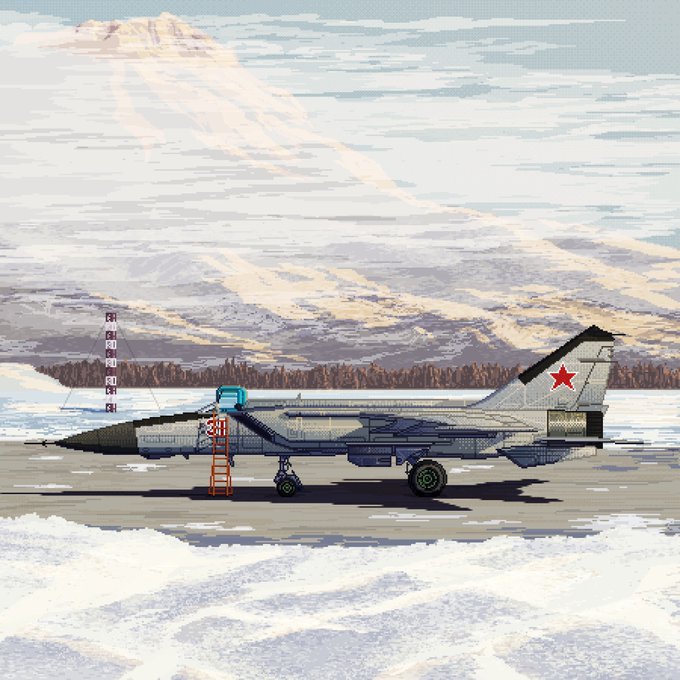
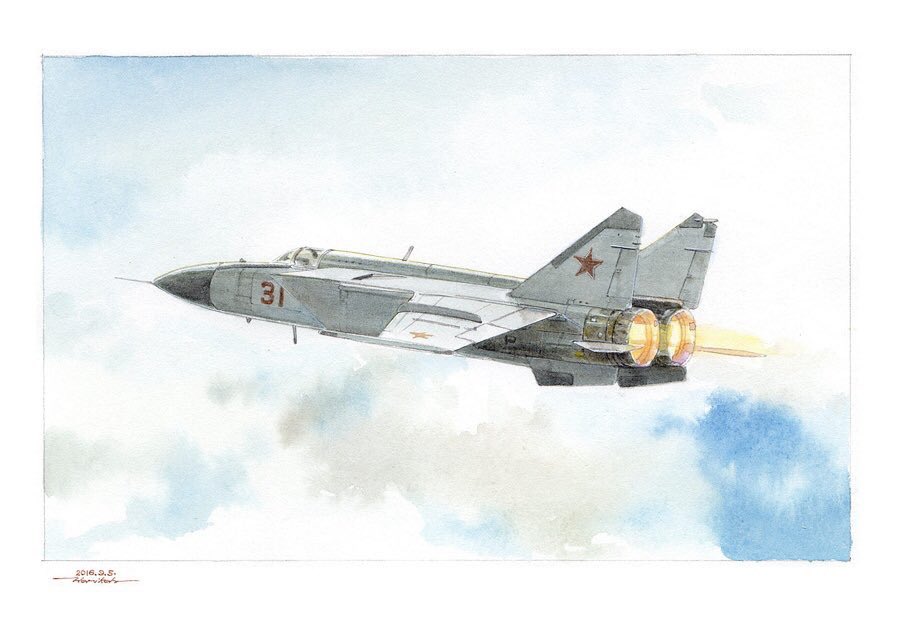
Construction description
The Mikoyan-Gurevich MIG-25P is a Soviet supersonic interceptor fighter with a metal structure designed as a high-wing monoplane. The aircraft’s structure consists of 80% nickel and steel alloy, 11% aluminum, and 9% titanium, which allows it to achieve high speeds while also reducing construction costs. The aircraft is equipped with a powerful yet simple TL-25 Smertsch-A radar, which performs excellently in tracking fast targets in front and above it, but cannot target those below it. The aircraft is powered by two Tumansky R-15B-300 turbojet engines with afterburners, which generate 73.5 kN (16,500 lbf) of thrust each dry and 100.1 kN (22,500 lbf) with afterburner. Thanks to this, the aircraft can achieve a cruise speed of 2.35 Mach, a safe maximum speed of 2.83 Mach (for 5 minutes), which can however be increased up to a maximum of 3.2 Mach but may lead to engine destruction. The aircraft can carry four R-40 missiles under its wings, but is limited to the R-40T infrared missile and the R-40R semi-active radar missile. Under the fuselage, a fuel tank of 5,300 liters can be installed.
Cockpit photos
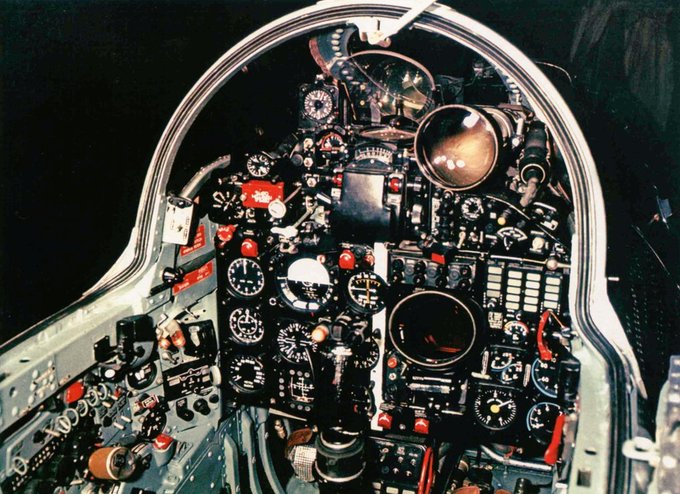
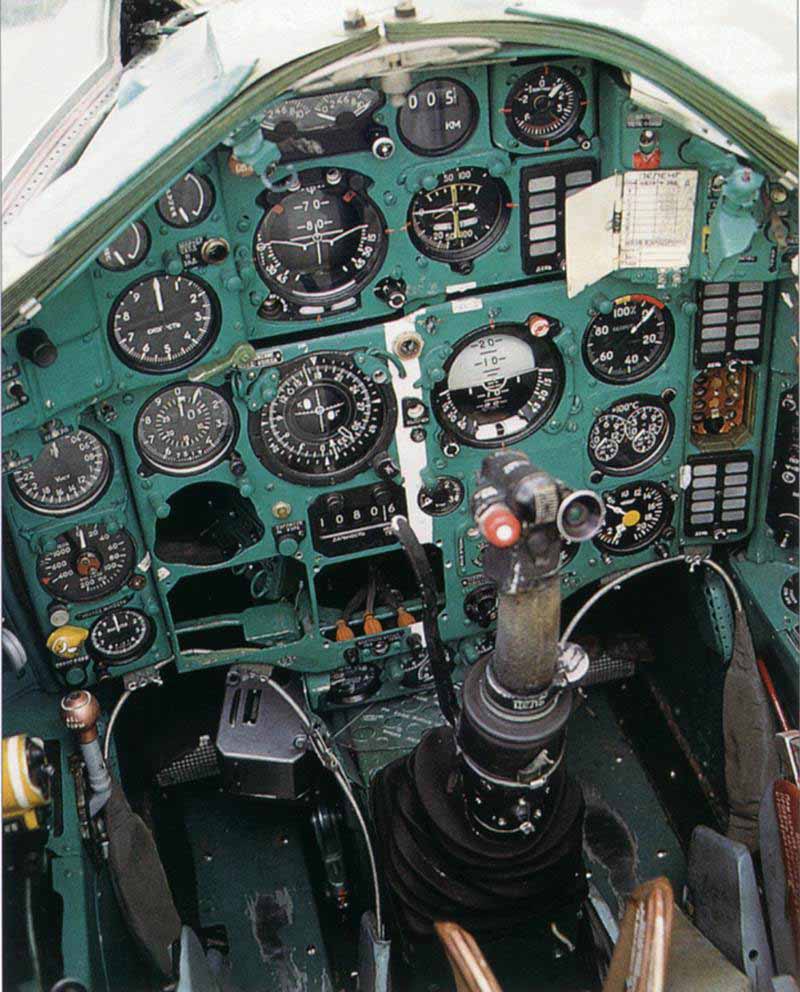
General characteristics
- Crew: 1
- Length: 22,3 m
- Wingspan: 14,1 m
- Height: 6,50 m
- Wing area: 61,40 m2
- Empty weight: 20,000 kg
- Gross weight: 36,720 kg
- Maximum take-off mass: 41,000 kg
- Powerplant: 2 × Tumansky R-15B-300 afterburning turbojet engines, 73.5 kN (16,500 lbf) thrust each dry, 100.1 kN (22,500 lbf) with afterburner
- Fuel Tank Capacity: 16580 l
Performance
- Maximum speed: 3,2 Macha (3 490 km/h)
- Speed limit: Mach 2.83 (3 090 km/h)
- Cruising speed: 2.35 Mach (2880 km/h)
- Range: 1 730 km
- Maximum Range: 2 575 km (?)
- Service ceiling: 20 700 - 24 000 m (without arms 37 600 m)
- Climb Rate: 208 m/s
- Time to Climb to: 8 minutes 54 seconds to 20 000 m
- Wing loading: 598 kg/m2
Armament
- Missile armament
- 2 x R-40R radar missile (under the wings)
- 4 x R-40R radar missile (under the wings)
- 2 x R-40T infrared missiles (under the wings)
- 4 x R-40T infrared missiles (under the wings)
- 2 x R-40R radar missile and 2 x R-40T infrared missiles (under the wings)
- Fuel dump tanks
- 1 x 5,300 L dump tanks under hull
Radar
- TL-25 Smertsch-A
Summary
The Mikoyan-Gurevich MIG-25P red 31 is an interesting aircraft for Japan in War Thunder. This aircraft would be a very fast interceptor with a powerful radar, but it suffers from weak armament, a small fuel capacity, and terrible maneuverability. This aircraft should not be an aircraft to research but preferably a special event or premium aircraft. I encourage you to discuss in the comments and to share your own knowledge on this subject.
Finally, I apologize for the linguistic and logical errors because unfortunately English is not my main language and I had to use google translator.
Additional information: any comment containing hate speech in this suggestion will be immediately flagged or reported to the forum moderators.
Internet sources
ベレンコ中尉亡命事件 - Wikipedia
Defection of Viktor Belenko - Wikipedia
MiG-25 (航空機) - Wikipedia
Mikoyan-Gurevich MiG-25 - Wikipedia
第4章 ミグ25事件
“ソ連軍が来る”ミグ25戦闘機の破壊計画 命令なしで動き始めた自衛隊 緊迫の歴史の舞台裏(2023年12月2日掲載)|STV NEWS NNN
[1.0] MiG-25 Foxbat
MiG-25 (みーぐどゔぁーっつぁちぴゃーち)とは【ピクシブ百科事典】
Уголок неба ¦ МиГ МиГ-25П
再録・手塚マンガあの日あの時 第1回:B・Jとミグ25亡命事件|虫ん坊|手塚治虫 TEZUKA OSAMU OFFICIAL
ベレンコ中尉亡命事件 | 刑事事件弁護士の中村国際刑事法律事務所
Mikojan-Gurevič MiG-25P [kód NATO: Foxbat-A] : Mikojan-Gurevič
Mikoyan-Gurevich MiG-25 “Foxbat” The cold war legend - Passed for Consideration - War Thunder - Official Forum
MiG-25P Foxbat Interceptor - Airforce Technology
Mig 25 in Japan, 1976 - FighterControl
The Soviet Pilot Who Stole a MiG, Downed It In Japan, and Demanded to Join the Japanese | War History Online
Book sources
- Japan - MIG - Incident (2)
- Japan - MIG-25 Incident (3)
- Japan - MIG - Incident (4)
- Japan - MIG-25 Incident (5)
- Japan - MIG-25 Incident (6)
- Japan - MIG - Incident (7)
- AC - Monografie Lotnicze 03 Mig-25 Mig-31
AC - Monografie Lotnicze 03 Mig-25 Mig-31 PDF | PDF - CIA MiG-25 Report
CIA MiG-25 Report | PDF | Aircraft | Radar - MiG-25 - Guardian On The Soviet Borders
MiG-25 - Guardian On The Soviet Borders | PDF
Additional sources
https://youtu.be/9_Q8J9liF4M?si=2x4igpjuDRLAITNq
ミグ25 函館に強行着陸|ニュース|NHKアーカイブス

Thank you for reading the suggestion, see you in the next one. Good luck pilots
